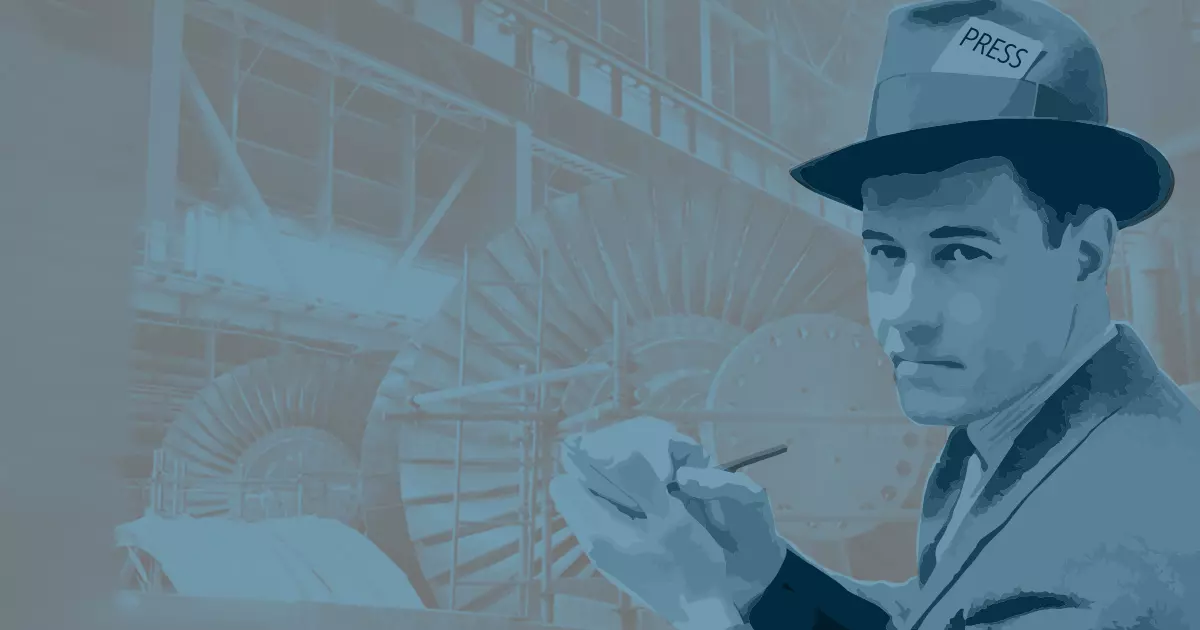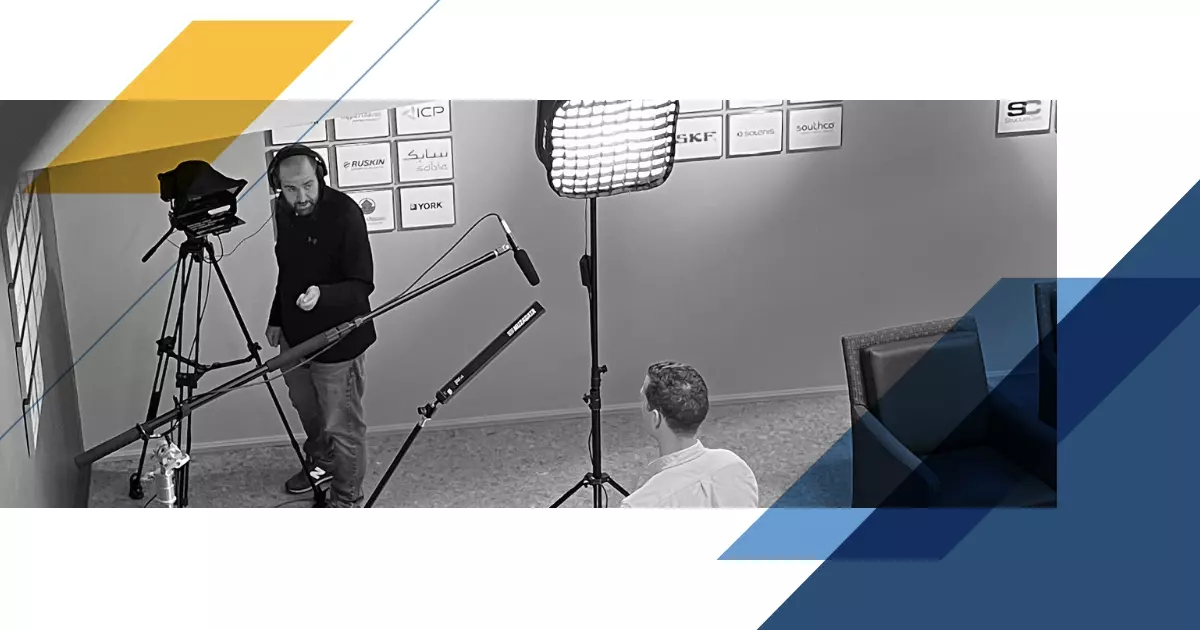Get the Story: Tips for Creating Hard-Working B2B Case Studies (Part 1)

Case studies are essential for B2B audiences, however creating them can seem daunting—here’s some help to clear common story development roadblocks from research to publishing.
The first line of my Godfrey blogger bio reads: “I love talking to engineers.” And why? Because, during three decades of B2B writing and content development, I’ve learned that engineers and technology-oriented professionals with engineering backgrounds have great stories to tell:
- Their stories are about the intersection of cutting-edge technology and creative thinking – how can I use this new tool/component/system/software to do what I want to do…and do it better?
- They’re passionate about what they do – and their passion to do things better, to make a difference, comes through loud and clear.
- By telling their stories, all audiences—not just B2B audiences—gain insight into the way our 21st century world works. And that’s always a great story.
Engineers make great sources for case studies. Equally important to B2B marketers, case studies are incredibly popular with engineering audiences.
In a 2017 IEEE study on Marketing to Engineers, it was reported that, worldwide, engineers prefer case studies and application notes and find significant value in them:.81 percent of respondents surveyed ranked case studies and application notes as either very or moderately valuable.
Clearly, a steady stream of case studies can be a powerful tool for building a technology company’s brands and contribute to success on the B2B buyer’s journey.
However, there is one drawback: Most experienced B2B marketers know that getting the story—from the first word about a possible success story, down to getting an article written, reviewed, completed and approved—usually involves a lot of legwork and (not infrequently) a lot of dead ends, wrong turns, and barriers to completion along the way.

A fundamental building block for Godfrey’s B2B success has been a focus on story development. Our integrated PR, advertising and marketing communications efforts always include specific plans for working with our clients to identify their success stories, then investing time and effort to capture and tell those stories across as many channels as possible.
Through these programs, our creative and client service teams have developed extensive experience with case study development within the B2B industry. That experience has provided insight into many of the common obstacles and challenges associated with developing this valued content.
We know “the rules of the road” from long experience – where the bumps and sudden turns are, and how to plan the journey to get a finished story done in optimum time.
What are the typical obstacles to efficiently creating a good B2B case study for engineering audiences?
- Creating & sustaining interest: Getting B2B clients to invest their time and efforts into identifying case study opportunities can be an initial hurdle. Today, everyone wants a fresh stream of content—but it takes persistent and repeated outreach into your client’s product management and (especially) sales organizations to identify new projects or new applications of existing client technology.
Typically, product management is proud to tout success stories, as are many sales/customer relationship managers. However, some sales reps have a bias against “bothering” their customers with marketing requests, so they can be a source of dead ends.
- Corporate policies: One obstacle that’s almost impossible to overcome is established corporate policies against “endorsements.” So even if your client and your client’s direct customer would like to do a case history about their latest project, you can hit a wall if the end-user’s corporate rule is to refuse to endorse the quality, performance, value or any other aspect of their suppliers and business partners.
Key rule of thumb: Find out early what policy (if any) the end-user’s company has in this regard. It can save a lot of wasted time and effort.
- Premature enthusiasm: Sometimes, clients will begin pushing case studies for projects that are not complete, or new products that have only begun operational life, so their benefit to the end-user’s manufacturing platform or other operations can’t be quantified, only predicted.
This isn’t to suggest that case study development can’t begin while a new project or installation is still underway; in fact, documenting the progress of a project—installing a new machine tool or packaging machine, for example—is worthwhile content, especially if photography or video can be captured. It’s just important to recognize that completing the story and publishing useful B2B content will take longer.
- “The client’s customer:” If you were doing a case study about a new quality program or public service activity at your client’s business, researching and writing the story is straightforward. But when you’re trying to produce a B2B success story, you’re engaging two participants: your client, whose products, services and brand you are paid to promote, and your client’s customer, with their own business, operational and brand imperatives. It’s a complication that is necessary, but also a potential source of roadblocks.
- Subject matter expert availability: Good engineering B2B case studies require first-person input from key project engineers—knowledgeable individuals who can explain a project’s goals in terms of technical advances, improvement in ROI or productivity, and how all the pieces work together. Unfortunately, these engineers often have very crowded schedules. They can usually be counted on to tell great stories once they get going, so it’s worth the effort to get them involved.
- Two-part review cycles: Once you’ve got the case study underway, you have two groups of reviewers to satisfy: your client and their customer. Hopefully, there is a limited number of reviewers in both groups; still, you will receive multiple inputs and requests for revisions, so plan accordingly.

Planning is the most effective strategy for efficient and effective case study production. With the right planning and forethought, the obstacles listed above can be dealt with.
At Godfrey, we have leveraged decades of successful case study development to create dependable, repeatable process for finding good stories, capturing the input and insight needed to complete good drafts and then managing the review process in a way that keeps the momentum going towards a finished story ready to be used.
Content strategies: Having good content strategies that specifically incorporate plans for case studies creates a framework to begin the search for case studies. Content strategies should be part of annual PR or marketing programs for your clients or specific to a target market or technology.
Identifying the potential number of stories and where they fit into the content strategy’s editorial calendar gets the information-gathering process rolling. It also makes it possible for your marketing client to get buy-in from product management, Salesforce and engineering management, committing them to helping you produce good case studies.
Simple story start-up tools: We have a standard “New Case Study Backgrounder” that captures basic information about the opportunity. Basic end-user contact information is captured, and then eight short qualifying questions lay the groundwork. Questions can include the situation before your client’s technology was considered, why the end-user first considered your client’s offerings or solutions and a summary of the key steps in the project from initial startup to completion. The Backgrounder should also document any mention of collaboration/cooperation/original thinking your client provided to the end-user customer.
Having this baseline information makes it much easier for you and your client to make the decision to invest in a full case study. It typically provides enough background to begin prepping for subject matter expert input.
If you’ve gotten this far and have the approvals you need and the background on the story, it’s time to begin full-scale research and writing. In Part 2 of this blog post, we will guide you through what it takes to complete an effective case study. We’ll identify some of the obstacles you may encounter and how to overcome them and provide details on some of the tools and approaches Godfrey uses to create strong case studies.
Sign Up for our Newsletter - Get agency updates, industry trends and valuable resources delivered directly to you.
Brian Moore - Content Director
A storyteller with three decades of B2B writing and content development experience, Brian loves talking to engineers and technology-oriented professionals. He knows they have great stories to tell.




